SPACE May 2023 (No. 666)
Phenomenon 1. Becoming the Purpose of the Visit
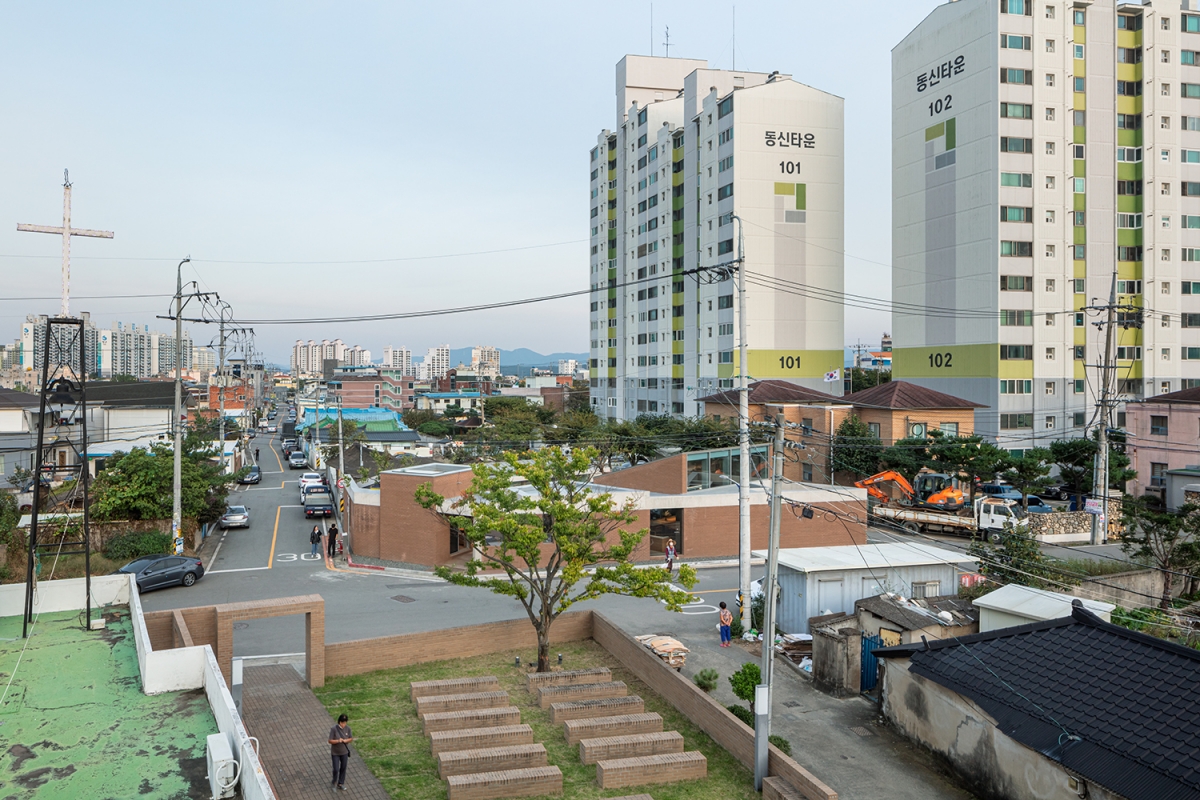
If There Were an Agora in a Rural Village: Meulbeut
Among the development trends of cafés, one trend that stands out as much as large-scale developments is developments with multiple functions. Cafés in partnerships with different programmes provide various experiences. However in non- metropolitan areas where cultural facilities are lacking, cafés go beyond this and function in multiple ways. This is true in the case of Meulbeut (2021) located in Hayang-eup, Gyeongsan-si. Hwang Yeongrye, a member of Muhakro Methodist Church in Hayang (2018) designed by Seung H-Sang and representative of Meulbeut, purchased a piece of land across from the church and commissioned Seung Jiehwoo (principal, 107 Design Workshop) and Kang Minsun (professor, Kookmin University) for design. One thing to note is that there were no specific requirements on the use or construction scale of this project. The two architects considered that the site was 50m from the church and the client’s house (used as a guesthouse) in setting the directions for design. In between these two poles, they mapped out a space where users of the nearby church and guesthouse can gather and share culture. As the client likes to engage with people, share food, and enjoy cultural activities, this could be easily imagined and realised. For this reason, Meulbeut became a café where people meet and share stories, a gallery, and a bookstore.
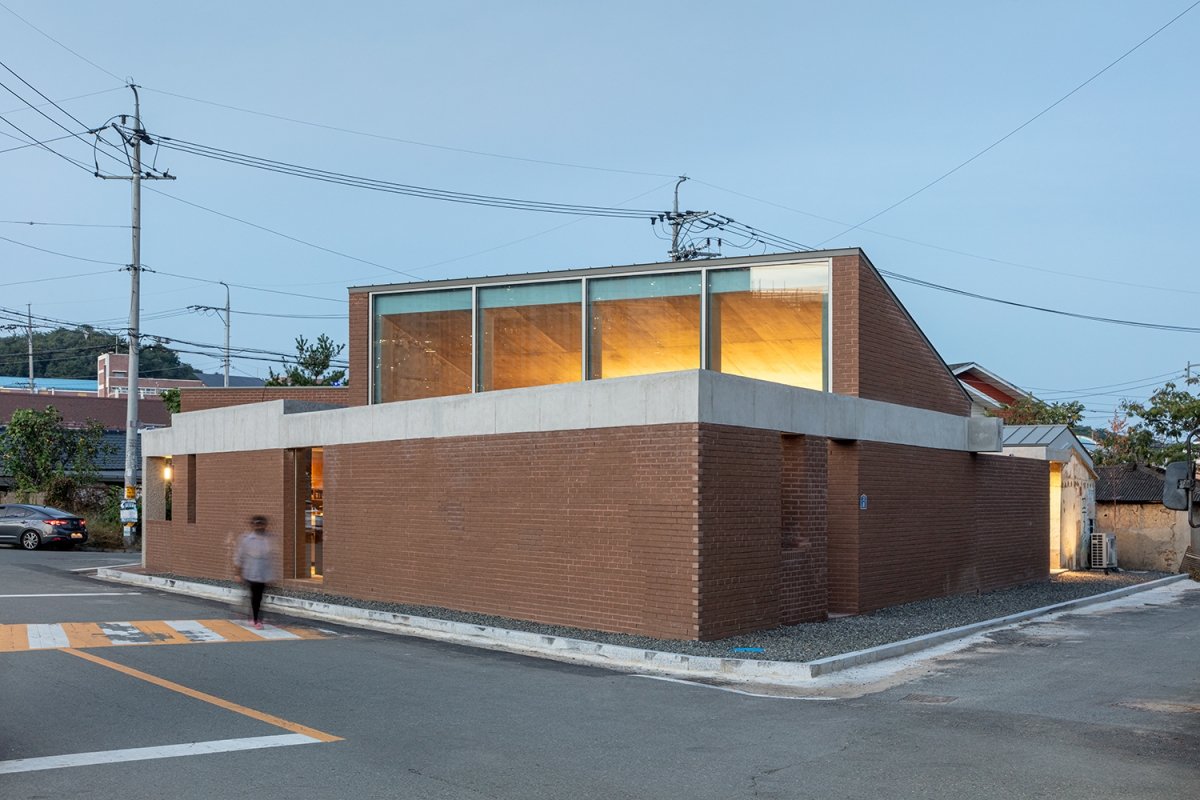
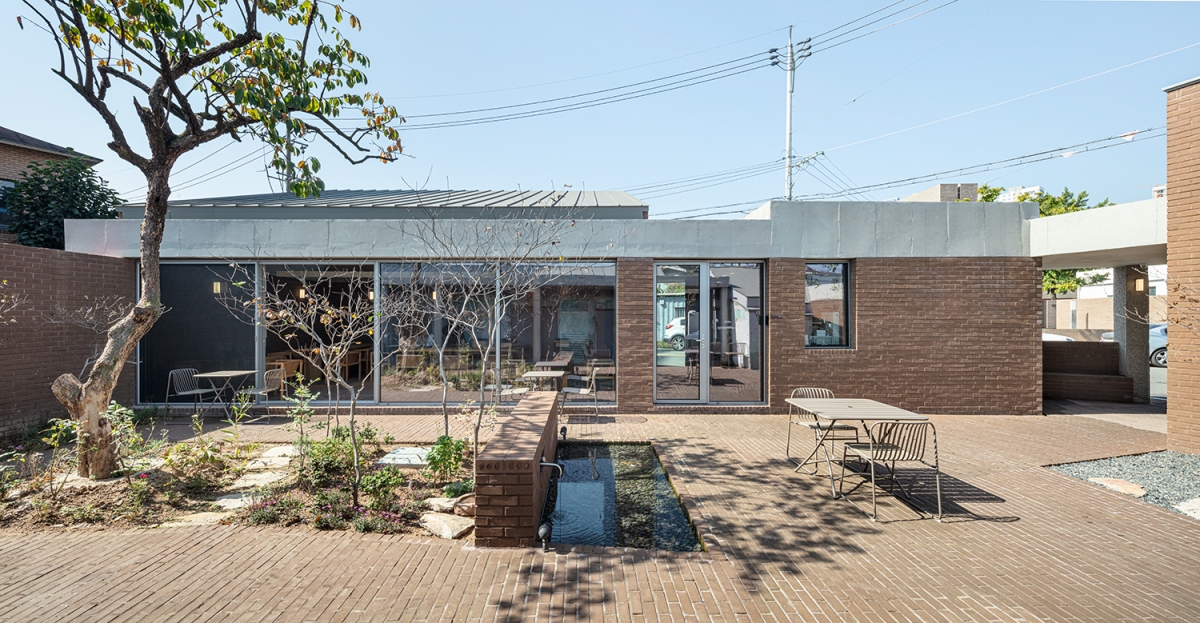
Hayang-eup used to be the least developed area in Gyeongsan-si. There are three universities in front of Hayang Station, forming a small commercial district. However, most of the buildings on the other side of the stream are 1 – 3 storey in scale. Meulbeut hides amongst the village in a similar scale where low-rise buildings are clustered. It masks its presence by being one storey in height, although legislations allow for higher (4 – 5 storey) buildings, having few windows which display the interior, and by utilising façade characteristics of a local house such as a thick parapet. When entering from the main road, the church stands out more than the café. Seung Jiehwoo says that he intended the building to be ‘less prominent than the church’ so as not to hinder the context while respecting the spirituality and following the will of his father, Seung H-Sang. There are two main moments when Meulbeut stands out. First, coming out from the church and arriving at the front yard of the church, one can see the main entrance to the café and the café’s courtyard in between. This may be regarded as a route only for church members, however the Muhakro Methodist Church in Hayang is also a favorite place for general visitors. On the day I visited the Hayang-eup, there were other visitors in groups of friends and family. Another approach to the café is through the sub-entrance located in between buildings. Meulbeut is a space where independent masses for each use are connected by walls, and large and small roads surround it in all directions. As if a measure of the success of the design intention of the space to become a place that residents may use in their daily lives, people were utilising the sub-entrances here and there, sometimes even making it difficult to track people because of the blind spot.
Hwang, smiling with satisfaction along with the architects, said that ‘Meulbeut has now become a public space.’ The word ‘public space’, coming from the words of a commercial space operator, was both awkward and welcome. It seemed as if she did not care whether people who do not use the café pass through the buildings. The repurchase rate of the café, less than two years of age, is 47%, which points to the fact that residents of the area often visit the facility. The newly built café is one storey, yet the ceiling height was raised and had clerestories. Light falling through the clerestories is very impressive. Music concerts and book readings are often held at the courtyard. The first concert was held free of charge, however, it was said to have only eight participants. Now Meulbeut has become a place to gather, attracting approximately a hundred people at a year-end music concert, which was their seventh event. A concert held in late April this year received reservations for 70 people, although it isn’t free of charge. On the other hand, the gallery across the café utilised the existing residencal building rather than choosing to demolish it. Its use centres around exhibiting art pieces, but is also used for academic functions in collaboration with nearby Daegu Catholic University. Likewise, Meulbeut is creating a new sense of community thanks to architects and the operator who sought to fill in the cultural deficit of the daily lives in a non-metropolitan area, and thanks to the residents responding positively to these ambitions.
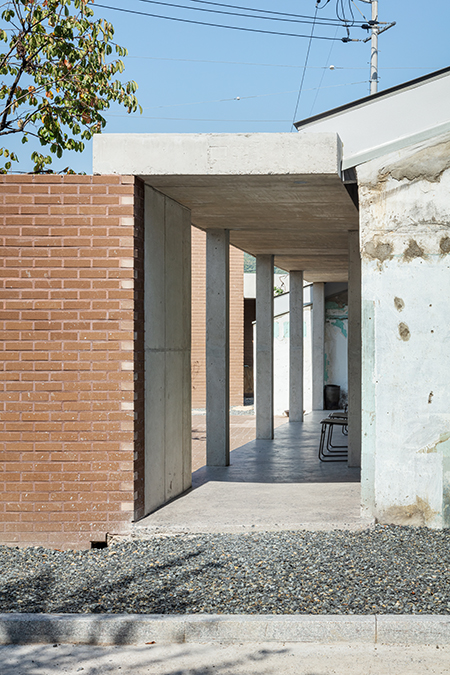
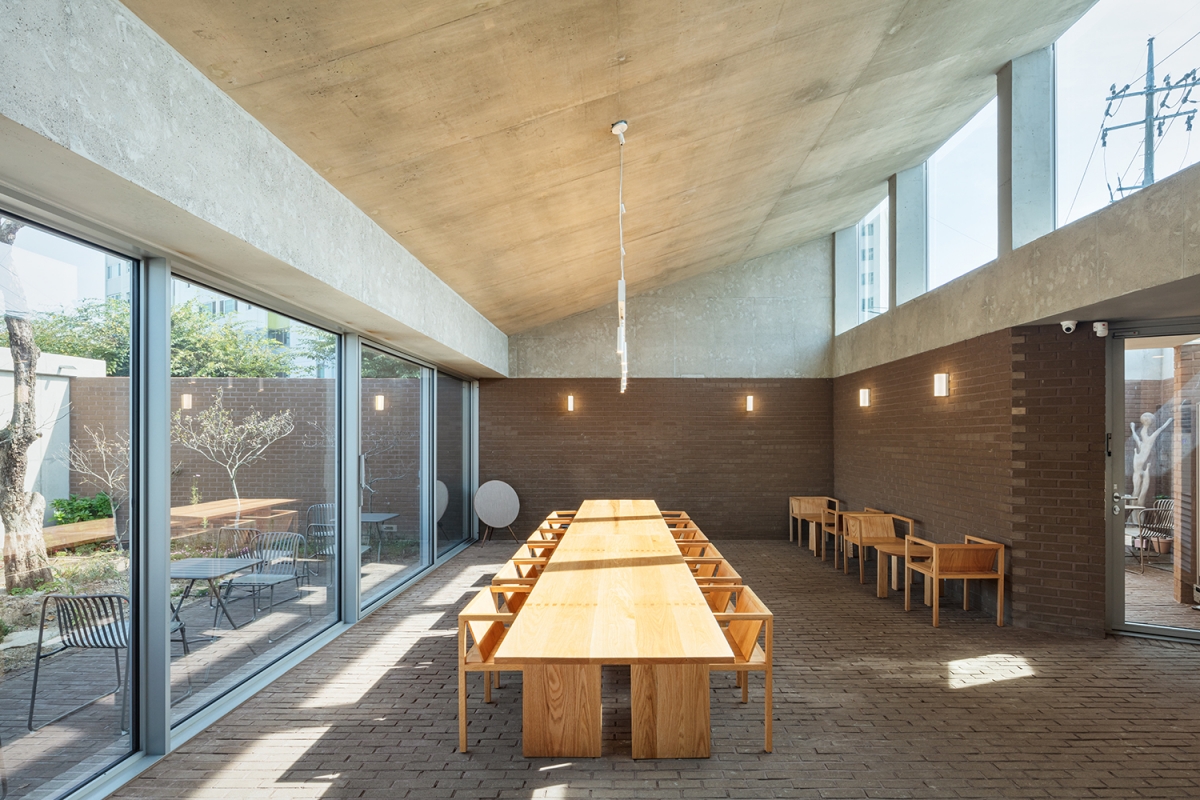
You can see more information on the SPACE No. 666 (May 2023).






